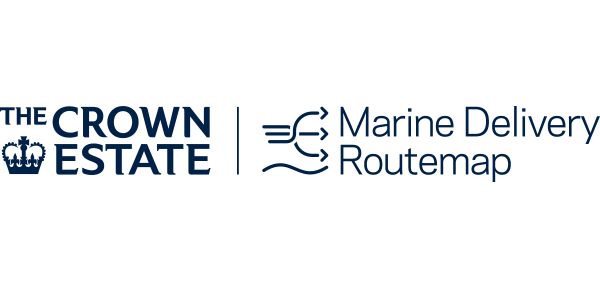Balancing the demands of net zero, nature and industry
In an increasingly congested marine environment, The Crown Estate is using ArcGIS to evaluate and identify the best locations for new wind farms and carbon storage facilities, as well as areas for biodiversity and opportunities for other crucial sectors. Its leading Marine Delivery Routemap utilises advanced geospatial analysis to balance the demands of net zero, nature recovery and industry more effectively than ever before.
Optimum development scenarios across 12+ industry sectors are generated using ArcGIS Pro
Alternative options can be compared and evaluated on dashboards built with ArcGIS Experience Builder
Stakeholders are engaged in decision-making process using ArcGIS Hub and ArcGIS StoryMaps
The Challenge
The Crown Estate is responsible for managing the seabed and much of the coastline around England, Wales and Northern Ireland, an area greater than the entire UK landmass. Its remit is to unlock value from the sustainable management of this seabed and return its net profit to the UK government for the benefit of public spending.
With many competing demands on the marine environment, the organisation needed to be able to find the best locations for new sustainable energy facilities and other new developments, while taking into account a vast number of constraints, from the routes of underwater pipelines and shipping lanes to fishing grounds and areas designated for the protection of marine species, such as the bottlenose dolphin.
“ArcGIS enables us to run scenarios out to 2050, for all of our sectors and the environment, in a way that we have never been able to do before.”
Jamie Moore, Marine Delivery Routemap Director, The Crown Estate
The Solution
The Crown Estate developed a Resource Identification and Optimisation tool, known internally simply as RIO, using Esri’s ArcGIS Pro and ArcGIS Enterprise solutions. This sophisticated geospatial app identifies and evaluates all constraints on the seabed, revealing the most constrained areas in pink and less constrained areas in light blue on an interactive marine map.
Using ArcGIS Pro, the organisation then runs analysis to identify and evaluate different scenarios. This process has been fully automated using Python to effortlessly identify the optimum locations for different projects. To date, The Crown Estate has identified areas of opportunity for twelve sectors that it manages, including areas where different sectors could share use of a marine area, known as co-location opportunities. Whenever circumstances change, such as when a new wind farm is built, the solution automatically re-analyses and recalculates the optimum scenarios, across all industry sectors.
The different scenarios can be examined in depth using a data visualisation tool created with ArcGIS Experience Builder. Users can, for example, use this tool to compare two alternative ways to reach offshore wind targets on a dashboard, one being the lowest cost option and the other being the option with the fewest constraints.
The Crown Estate also uses a range of ArcGIS products to help it engage with stakeholders. For example, it has created a map-based discussion board in ArcGIS Hub that allows fishermen to review and annotate marine maps to show where fishing takes place. It has also built a story with the ArcGIS StoryMaps app builder to share its ambition for unlocking up to 4.5GW of new floating offshore wind capacity in the Celtic Sea by 2035.
“We can now focus on creating a thriving marine environment and delivering greatest value for the nation.”
Michelle Moore, Technical and Spatial Planning Director, The Crown Estate
Benefits
Faster delivery of net zero policy targets
Through this cutting-edge use of ArcGIS for geospatial analysis and data, The Crown Estate now has the potential to support faster, well-informed decisions, which could acceleratethe delivery of the UK government’s net zero policy targets. In a marine area that already has over 2,400 wind turbines and 40,000 km of cables, it can rapidly identify space for new projects and prioritise those locations with the lowest development costs and fewest impacts on the environment, industry and other marine users. “We estimate that ArcGIS saves us hundreds of days of analyst time,” says Joseph Sykes, Senior Marine Spatial Planning Manager.
Evidence-based Routemap for the future
The use of ArcGIS has delivered the insight that The Crown Estate needs to formulate a holistic, evidence-based plan for the future, called the Marine Delivery Routemap. “ArcGIS enables us to run scenarios out to 2050, for all of our sectors and the environment, in a way that we have never been able to do before,” explains Jamie Moore, Marine Delivery Routemap Director at The Crown Estate. “It enables us to understand the consequences of each scenario – both positive and negative – and create the best Routemap for the future. It really is a truly powerful tool.”
Informed decisions to support nature recovery
Critically, ArcGIS is helping The Crown Estate to make informed decisions about how to support and protect nature and achieve Good Environmental Status, while developing the marine environment. As Harriet Baldwin, one of the organisaton’s Marine Spatial Planning Managers, observes, “With ArcGIS, we are creating an improved spatial understanding of where nature recovery activities could be most needed and the potential pressures upon them from other future activities.”
Interactive engagement with stakeholders
The Crown Estate values the way in which it can build interactive ArcGIS apps and services, using tools such as ArcGIS StoryMaps and ArcGIS Hub, to help it convey its complex analyses to stakeholders, across multiple agencies and sectors, and take into account their views. The organisation can involve dozens of interested parties in its decision-making processes and better understand the needs of people, like those whose fishing livelihoods depend on the sea.
An auditable, repeatable process
ArcGIS has enabled the creation of a fully auditable and repeatable process, so The Crown Estate can rerun, update and evolve its spatial models as new data and evidence becomes available, to make robust decisions and deliver on government priorities, while managing marine environments sustainably. Confident that the organisation now has the capability to balance conflicting demands on the seabed, Michelle Moore, Technical and Spatial Planning Director at The Crown Estate, says, “We can now focus on creating a thriving marine environment and delivering greatest value for the nation.”



